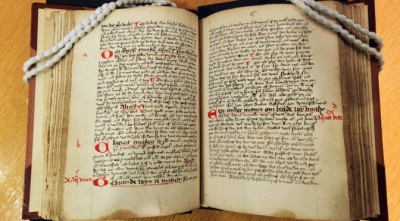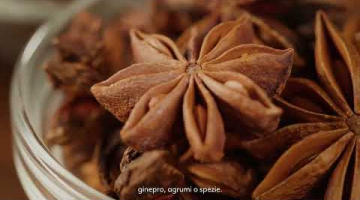A 500 year old book and a trail that leads from the British Library in
London to the Jenever Museum in Schiedam and finally to the vineyards of Cognac. A screenplay for a new Indianna Jones instalment? Another offering from The Da Vinci Code author Dan Brown? Throw in a little gin for good measure and we’re getting closer to the true story. And it is a very true story.
Prologue, the 500 year old book
Phillip Duff, Irish born and now USA resident, is an internationally renowned drinks expert. He’s also a lover and scholar of gin and its precursor jenever. Ten or so years ago he was studying a long
out-of-print history of the subject, Jenever in de Lage Landen – in the original Dutch. In it he noticed a reference to a particular recipe
calling for “…a distillate of a mixture of brandy…nutmegs, ginger, galangal, grains of paradise, cloves, cinnamon and cardamon”. Amongst references to further ingredients was the mention of the old Dutch word “gorsbeyn”. The author pointed out that various translations offered up differing interpretations of this word,
ranging from “gore” meaning “frog” to a corrupted spelling of “ghurst” which stands for juniperus. If, the author concluded, this
interpretation was correct then this grape distilled spirit could well be the oldest known gin recipe. After all it came from a book written in 1495.
Significantly the recipe had been recorded in the book amongst kitchen recipes, not “medicinal liquids”. In short the liquid appeared to have been created for the sheer pleasure of drinking, a
recreational spirit. And a spirit not unlike the gin we know today.
This intriguing discovery haunted Duff for years until the wine
connection within the recipe lead him to EWG Spirits & Wines and its founder and master distiller Jean-Sébastien Robicquet. And Duff knew this was the place to realise his dream. “It’s perfect,” he says “because Maison Villevert is a place that really celebrates the grape in all its expressions”. And with the help of Jean-Sébastien Robicquet and his team, Duff knew exactly what he wanted, “two expressions, Verbatim as close as possible to the original for gin
museums around the world, and Interpretation for modern tastes”.
The journey was about to begin.
The trail – part 1, London
In order to realise his dream of validating and recreating the recipe Duff decided to wheel out the drink world’s big guns. Having already done significant ground work with Dave Wondrich, Cocktail
Historian, he added Gaz Regan, Mixologist and Industry Guru, and Dave Broom, Spirits Writer, to the team. We were also fortunate enough to join the trail.
So it was that we found ourselves on the first day assembled in the Punch Room of the stylish Edition hotel in London. After a military style briefing we were off. First stop, the world famous
British Library. Somewhere amongst its 150 million volumes lurked the original book of which we had been told and which for Duff had become an obsession. It had come to be here amongst the Sloane Manuscripts, as one of countless pieces that had been compiled by British physician and collector Sir Hans Sloane. After his death in 1753 he bequeathed his collection to the nation providing the
foundation for the British Museum and the British Library. We were lead deep into the building, arriving at the board room. And there it was, propped up, open, on the huge table. The room fell silent as we gathered around the small volume. It was hard to believe this book was written by hand over 500 years ago. And drawing closer there it was, the recipe.
Translating from the original old Dutch as he went, Duff read the recipe aloud. He had seen it with his own eyes and we had witnessed it. “Seeing it was a very emotional experience”, said Duff, “the text was exactly as it had been described. The book itself was so fresh and vibrant, clearly very expensive when it had been made.” There was no time to linger though. After paying our respects to its one time guardian, Sir Hans Sloane with a visit to his statue in Chelsea we were off on the next stage of our journey.
The trail – part 2, Schiedam
Our next stop was Holland, the country where the 1495 recipe had originally been created and recorded. It was also the place where we could visit the Jenever Museum in Schiedam. Here Duff was able to piece together the link between the original recipe and it similarities in ingredients and method to early jenever production.
As Duff said “the original recipe referred to cooking juniper berries in wine, adding the botanicals nutmegs, ginger, galangal, grains of paradise, cloves, cinnamon and cardamon. In 1582 there was
another book published called A Guide to Distilling in Holland. This contained another significant fact, pointing out that people were drinking grain spirit as well as grape spirit. So between 1495 and 1582 there was a switch. Why? Ongoing wars made it difficult to source wine from France so it was gradually replaced by grain in the process”. We had the missing link between the 1495 recipe and
jenever, and in turn gin.
The “detective work – looking for clues” as Dave Broom called it, was really starting to pay off. But for all the academic endeavour and two days of theory it was time to put some ideas into practice.
The trail – part 3, Villevert near Cognac
On to France and to the wine distilling innovation centre of EWG Spirits & Wine. We sampled the early efforts of Duff and Wondrich and the team set to work over the next two days to create two
versions of the gin. One would replicate the original recipe as closely as possible. The second would be a new, contemporary
interpretation. Surrounded by countless botanicals and distillates, note books and scientific apparatus we were in for a long two days.
Variation after variation was created. Some were blind alleyways, others showed promise. Tasting following tasting. One by one the ideas and choices were whittled down. Then test distillations were carried out.
Gaz Regan records his thoughts on his experiments
Finally we had our gins, but what do they actually taste like? For Duff it’s simple. “Verbatem is a powerful spirit that’s got a deceptive
balance to it. At first it’s like a knock out punch of cloves, nutmeg and cinnamon. Then you get all these little surprising notes of
balanced juniper and cardamon. It’s very round because it’s based on a grape spirit. As for Interpretation, all the original notes are there but it’s just a little more accessible.”
And as Gaz Regan added, “It’s not just about the taste, for me I’m back there at the table with the people hundreds of years ago
tasting these exotic spices for the first time”.
The trail had brought us two gins but our journey was not yet
complete.
Epilogue
This was all some six or so weeks ago. Now the gins are almost ready for the world. Production will be extremely limited. Only a lucky few will get the chance to taste this spirit and with it experience
something that had been shared in a wealthy household in 1495.
Come September a Limited Edition GIN 1495 pack consisting of the two variants; the 1495 original recipe and the modern
interpretation, will become available. Each aspect of production will take place in the grounds of Villevert and they will be gifted to a lucky few, in particular spirits scholars and enthuasits around the world and seats of learning, such as the aforementioned Jenever Museum in Schiedam and the Museum of the American Cocktail. There are also plans for charity auctions – watch this space for
details.
Importantly as Jean-Sébastien Robicquet observes “This is a legacy. Before you know where you are going, you have to know where you are coming from. I’ve been an evangelist for the grape. And to know this recipe is based on wine is just magnifique!“
Last word
“I like to think that whoever wrote that recipe down originally would be very happy with what we have done.” So says Phillip Duff. Which reminds us that the original recipe was created as a recreational drink so how would our experts enjoy it?
“I’m going to drink it straight. I’m going to sit down and drink it with no ice and no dilution and I’m going to connect with that distiller and some lord of the manor 500 years ago.” Phillip Duff
“At 15th century chateau room temperature in Holland. In a very small measure. It’s there to savour. It’s there for contemplation.” Dave Broom
“I would enjoy it as an after dinner drink. Something to be savoured neat for its complexity.” Gaz Regan
“Neat, from the fridge in a liqueur glass, or over ice, or in a
martini.” Jean-Sébastien Robicquet
And so our epic adventure comes to a close. But as Duff observes “when we release this to the world someone may well come forward with an even older recipe. And I for one would be delighted!”
Maybe you know that recipe?
thanks to original post http://www.thecocktaillovers.com/2014/07/the-mystery-of-the-oldest-known...
















